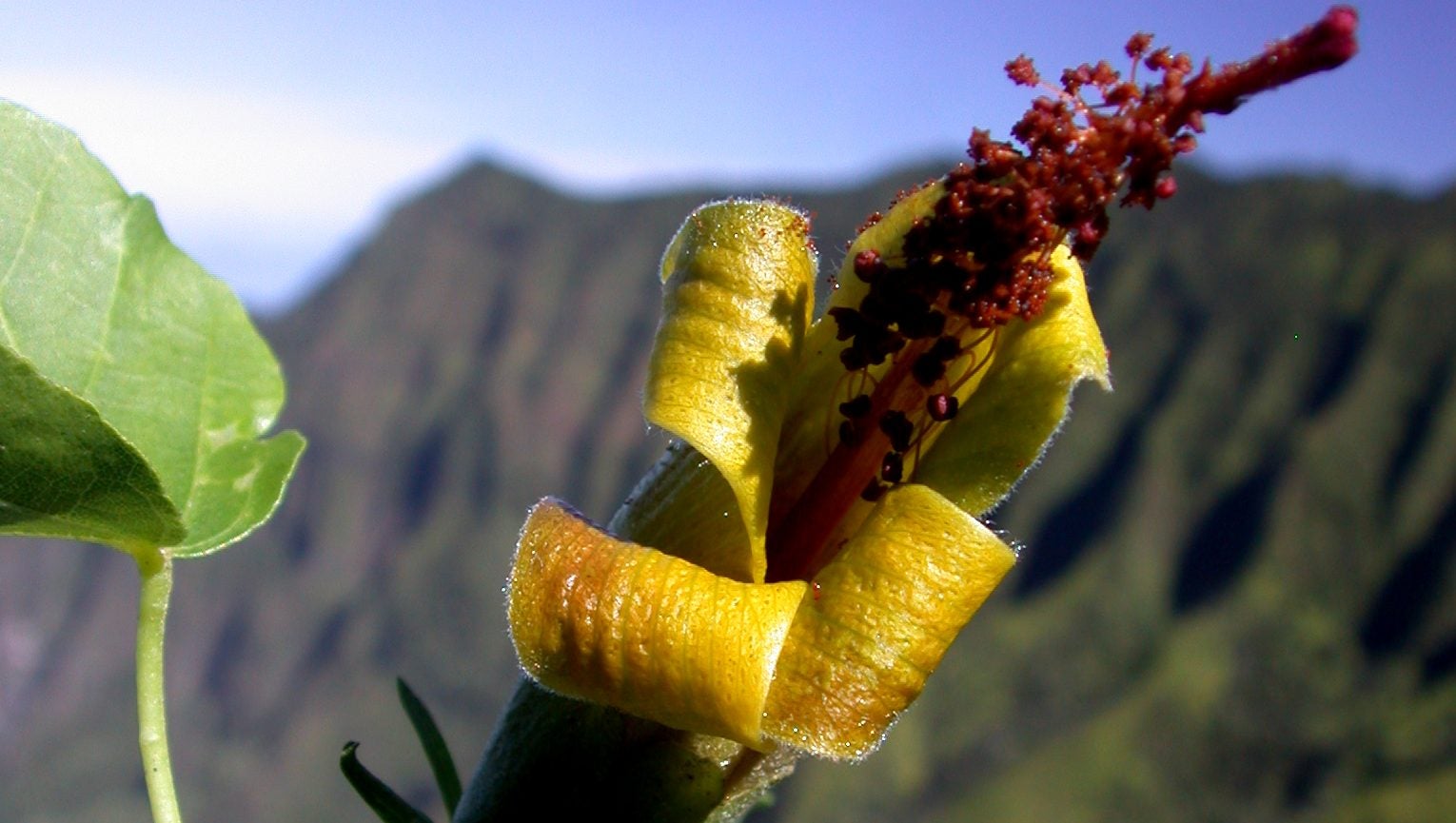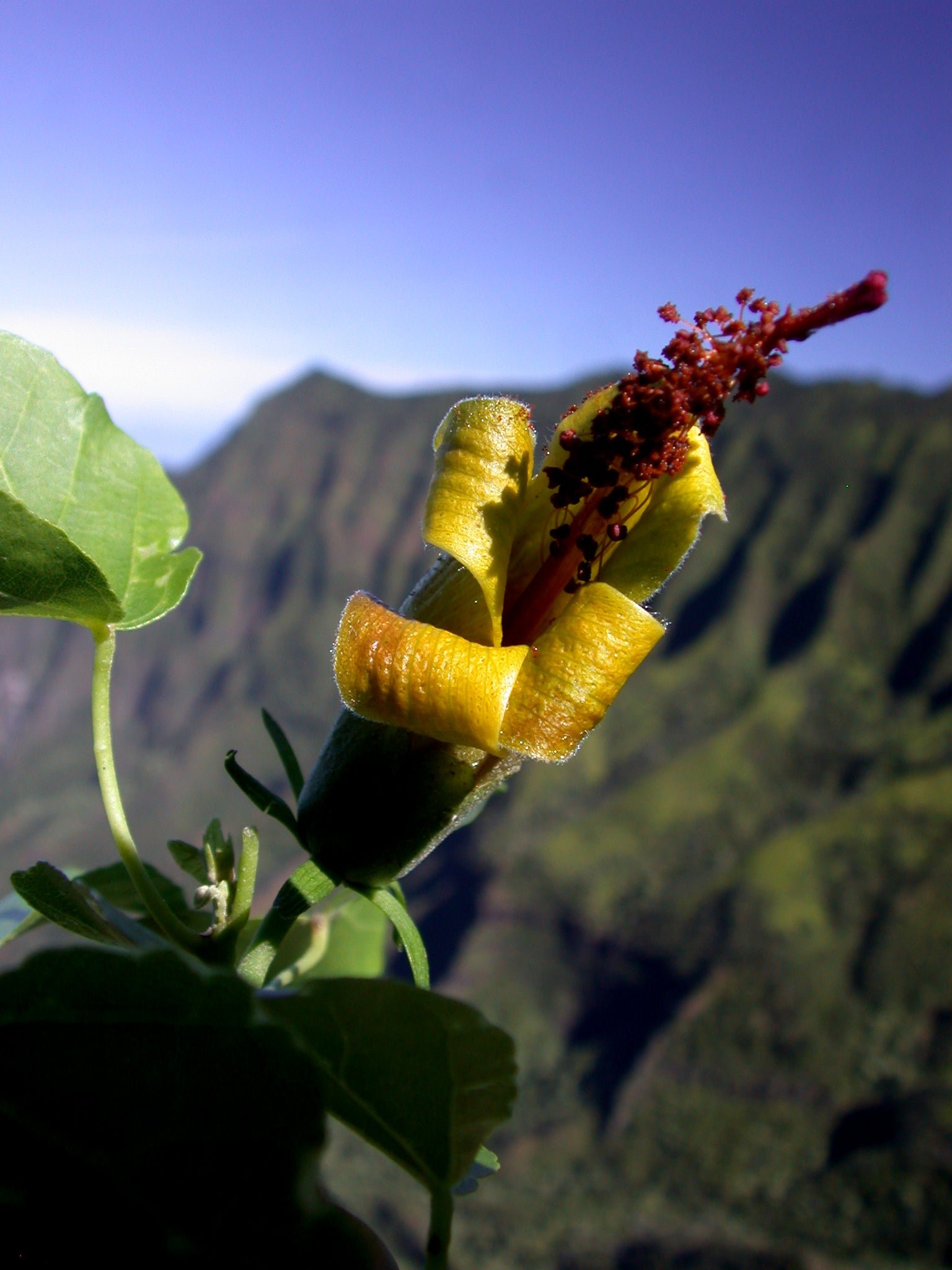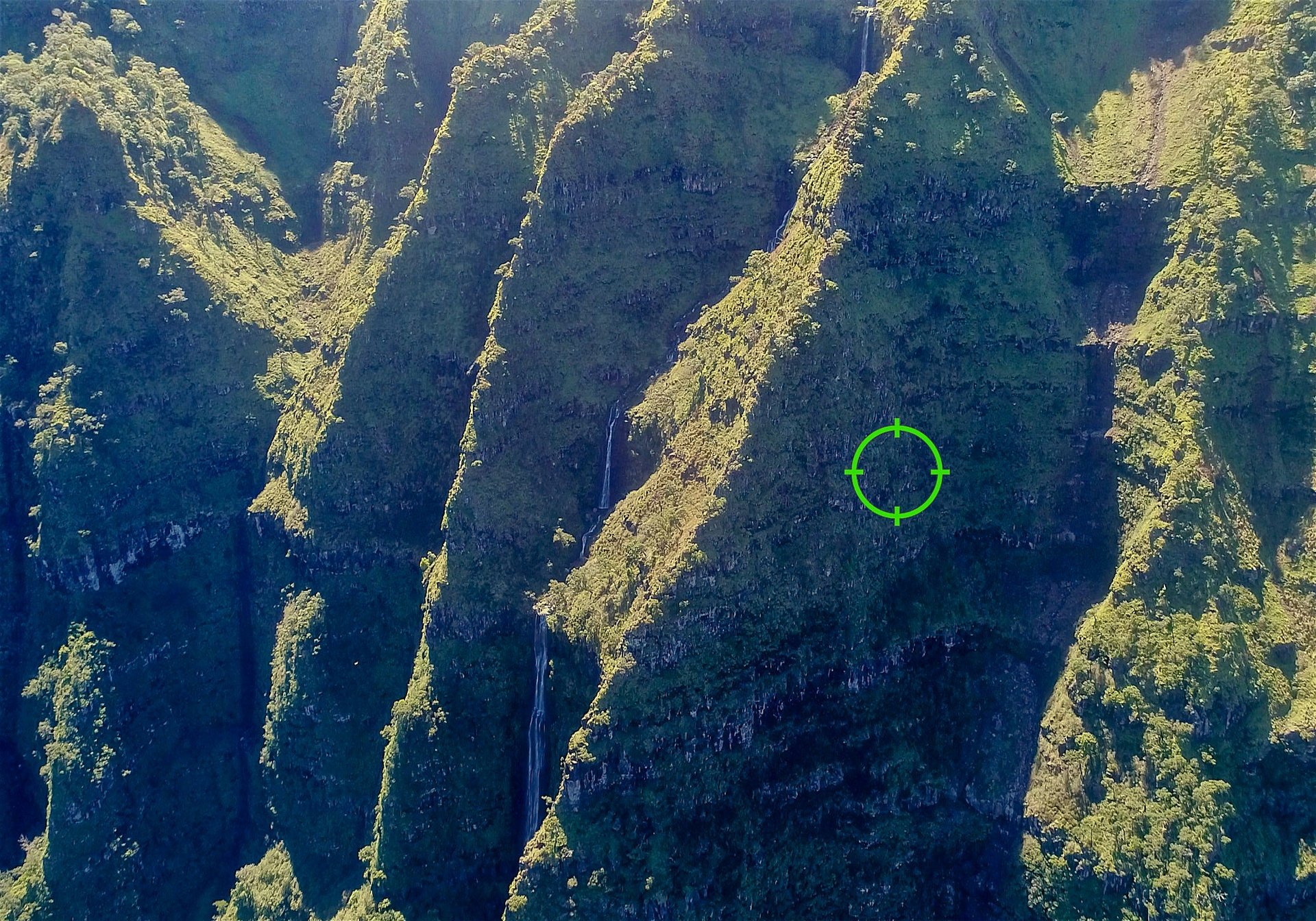Botanists rediscover a rare Hawaiian flower thought to be extinct—thanks to a drone
There are many benefits to living on a sheer cliff face, if you’re a very rare Hawaiian plant. Hungry goats can’t get to you. Neither can oblivious people, who are known to crush priceless plants underfoot.


There are many benefits to living on a sheer cliff face, if you’re a very rare Hawaiian plant. Hungry goats can’t get to you. Neither can oblivious people, who are known to crush priceless plants underfoot.
Nor can botanists, even though they just want to save the plants. That’s how Hibiscadelphus woodii, a relative of the hibiscus flower, wound up on the extinct species list in just shy of two decades after it was first discovered by botanist Ken Wood in 1991, in the Kalalau Valley on the Hawaiian island of Kauai. The last known sighting of H. woodii was in 2009. Efforts to grow new H. woodii plants in greenhouses failed over and over; neither grafting, tip cuttings, nor attempts at cross pollination could resurrect it. The hundreds of thousands of years-worth of evolution that created its unique features—such as its tube-shaped bell, which turns from yellow to maroon as it ages, and is formed to perfectly fit the beak of its pollinator, a native species of honeycreeper bird—seemed lost forever.

But extinction is not always an exact science. It can depend where you look.
Wood has spent his career at the National Tropical Botanical Garden pushing the limits of anti-extinction botany, often rappelling down cliffs on Kauai and hanging out of helicopters to find and rescue precarious species with fewer than 50 individuals left—many of them with far fewer, perhaps just five or 10. In the Hawaiian islands, species like that are often found on a single part of a single island and nowhere else in the world.
Some of these are places where even Wood and his longtime field partner Steve Perlman, with their ropes and copters, cannot reach.
In 2016, Ben Nyberg, a drone specialist, began working with the National Tropical Botanical Garden on Kauai to scope out extreme spots in the verdant valleys of the island. He’s found examples of several rare species over the last few years, expanding the number of their individuals known to exist in the wild by a few here and there.
But on a sunny day in February 2019, the drone’s camera picked up an even more exciting tuft of flora. Nyberg and Wood stood on a ledge over a sheer wall of green. They’d hiked 700 ft down from the top of the Kalalau Valley cliffs to get there, but couldn’t get farther down into the valley, so Nyberg flew a drone another 800 ft down to look at a particularly verdant patch. “It’s probably never been looked at,” he says. Wood could tell from afar that it was a patch of native vegetation. On an island plagued by invasive plant species, that is always a welcome sight.
And then they saw it on the monitor: Hibiscadelphus woodii, like a ghost from the recent past, yet very much alive. They were thrilled. “There were some high fives for sure,” Nyberg says.

In the drone footage, as the fluted cliffs slowly come into closer view, what first seems to be a carpet of green differentiates itself into individual plants, until eventually an unassuming little tree is in frame. To the untrained eye, it might be lost in the wash of its green surroundings but Wood knew it immediately to be the rare hibiscus relative he discovered in the 1990s. In the video below, you can see it at around the 00:58 mark:
As far as Nyberg knows, it’s the first time a drone has been used to rediscover a species of plant thought to be extinct.
“I’m encouraged,” he says. It means there are almost certainly more like it out there. And there’s still the whole rest of the valley to explore. So much has been out of reach for so long. “A lot of these areas have never been surveyed before. Those are the areas I’m aiming at now.” Species new to science or thought to be lost forever might be in any nook or cranny, each of them representing innumerable years of their own evolution.